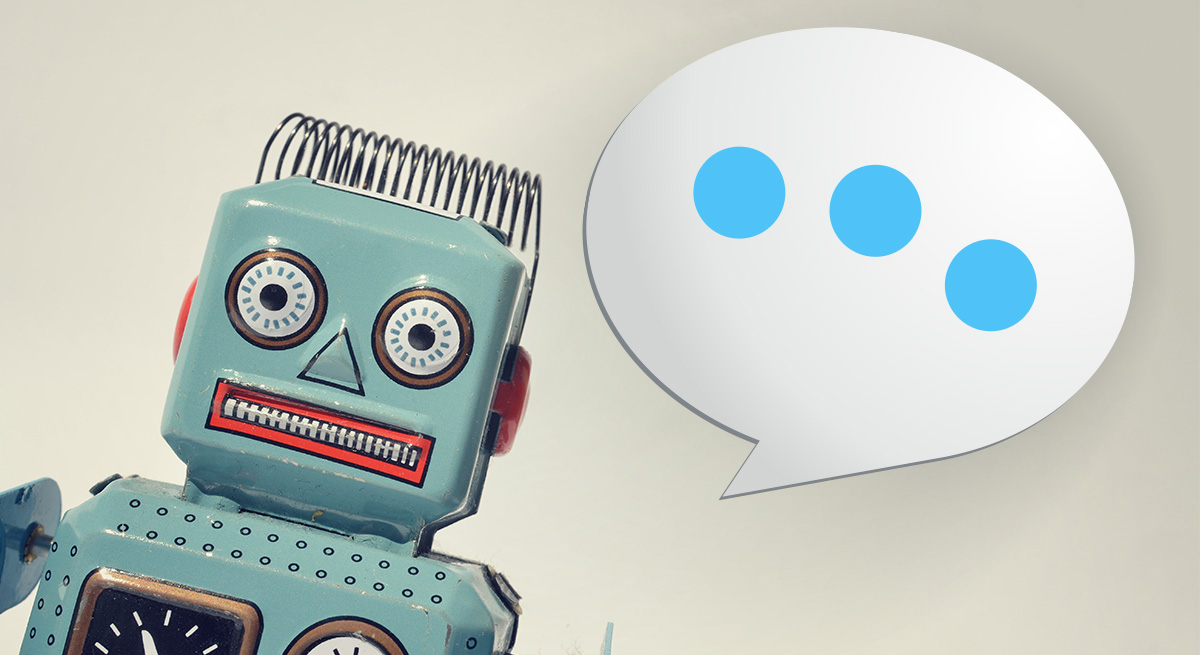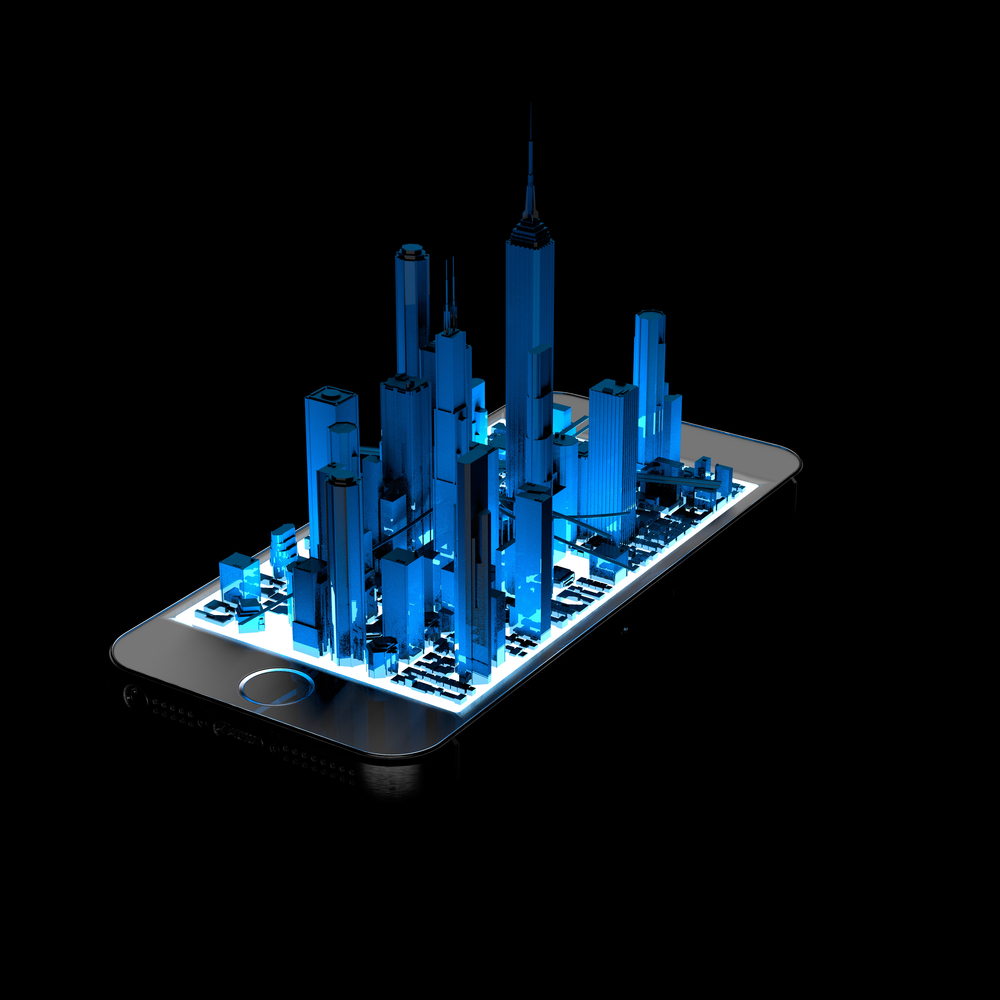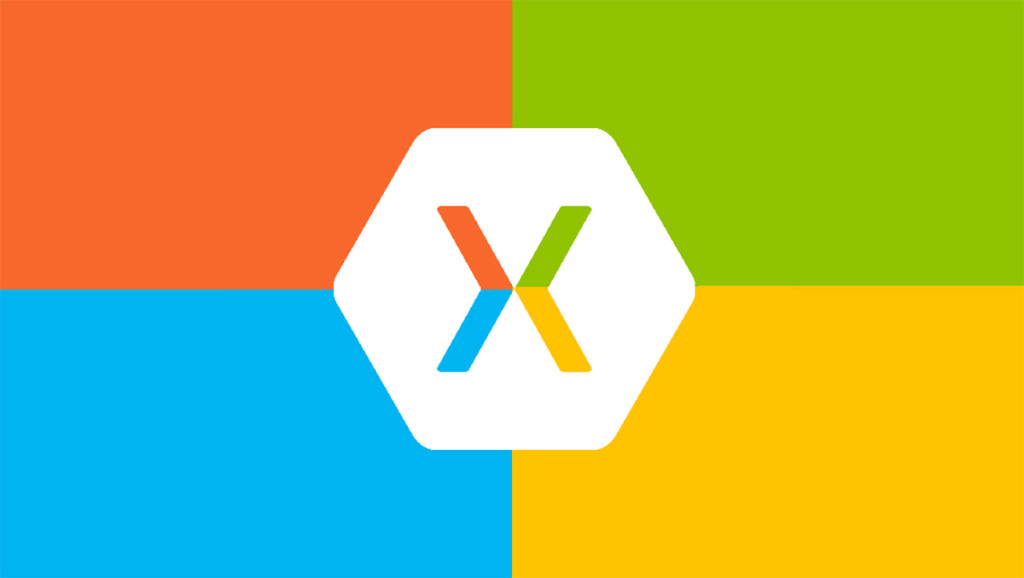


Chatbots: The Story of Conversational UI
From self-driving cars to personal assistance to home automation devices to cutting-edge medical technology, artificial intelligence (AI) is everywhere. As of June 2016, artificial intelligence received $974 million of funding, and experts predict that this figure will only rise. In fact, the AI market is set to reach $11.1 billion by 2024, according to technology research firm Tractica.Behshad Behzadi, principal engineer of Google Now, says, “There’s an element of AI in everything we do. It’s just a way to interpret correctly either what the user is saying right now, or what they might need in the future.” Thanks to the advances in cognitive technologies, we can now accurately recognize natural human speech, automatically translate texts, and provide end users with relevant answers to their questions. These capabilities allow us to interact with computers in a conversational way.
If we take a step back and look at the history of computing, we can see how it’s intertwined with the various ways users interact with electronic devices. Just like Graphical User Interfaces (GUIs), which were popularized during the 1980s by Apple, Microsoft, and Xerox, removed the steep learning curve of Command-Line Interfaces (CLIs), so can Conversational User Interfaces (CUIs) make computers more accessible for the average person.
Deloitte analysis based on CB Insights data revealed that Conversational User Interface startups raised over $200 million in 2016. According to a report by Luxury Daily, 22 percent of consumers have used a Conversational User Interface to interact with banks. Gartner predicts that customers will manage 85 percent of their relationships with enterprises without interacting with humans by 2020.
Clearly, some of the largest industry players see Conversational User Interfaces as the future of how people interact with electronic devices, perhaps because millions of individuals around the world are already using Conversational User Interfaces on a daily basis in the form of Chatbots.
Meet Chatbots
Chatbots are arguably the biggest trend coming to social media sites and instant messaging apps. “Advancements in artificial intelligence, combined with the proliferation of various messaging apps, is fueling the development of Chatbots which can carry out different kinds of tasks such as scheduling a meeting, reporting temperature, assisting users with buying new gadgets, and so on. This has led businesses to invest heavily in the chat economy. The bot revolution is still in an early phase, but the enthusiasm is clearly growing rapidly among customers and businesses,” argues Ashish Kumar, an alumnus of International Institute of Information Technology, Bangalore.What exactly is a Chatbot? One widely accepted definition describes a Chatbot as an interface that enables users to complete a task through conversational interaction with a machine. Simply put, Chatbots are very smart programs that you can message to get answers. An e-commerce bot can help you order the right pair of shoes for your graduation ceremony, a banking bot can help you open a bank account or check your current balance, and a hospital bot can guide patients to the correct ward.
Most of these bots live inside various messaging apps, such as Telegram, Facebook Messenger, or WhatsApp. “Messaging apps seem to become the bridge between today and tomorrow. They are the most frequently used apps today. Their increasing usefulness is the number one cause for the mass extinction of the single-purpose apps,” explains Radek Jezbera from Black Pine Executive Consulting, adding, “There are becoming platforms themselves enveloping services which in the past we needed to download, launch, and register within a separate app.”
In 2015, more than 1.5 billion people used chatting apps, which constitute 75 percent of the time people spend on their smartphones. In China, WeChat, a social media application developed by Tencent, is already considered the most powerful app in existence, incorporating functions like online shopping, sending payments, buying movie tickets, or getting a taxi. Soon, Western instant messaging applications could be just as powerful because of the high demand for instantaneous responses.
A [24]7 study, titled A Retailer’s Guide to Chatbots, Live Chat, and Messaging found that 25.8 percent of 1000 customers preferred to communicate with a Chatbot, instead of a real human being, while purchasing goods or services. This figure is surprisingly high given the current state of Chatbots, and it will certainly grow larger as Chatbots become more capable.
From the point of view of consumers, the advantages that come with living entirely inside instant messaging apps are clear: fewer installed apps, less time spent learning how to navigate various user interfaces, and better integration. Developers also greatly benefit because they can quickly reach a large number of users, instead of struggling to gain visibility in various app stores.
Chatbot Landscape
Most Chatbots in existence live in a few ecosystems that grow around popular instant messaging apps. Facebook launched Chatbots for Messenger at Facebook F8 in 2016, an annual conference held by Facebook. The company wants to partner with businesses to build deeper interactions with their customers on Facebook Messenger in a way that is contextual, convenient, and delightful, with control at its core, states the official press release. “[Bots for Messenger] can provide anything from automated subscription content like weather and traffic updates to customized communications like receipts, shipping notifications, and live automated messages, all by interacting directly with the people who want to get them.” Facebook is also testing its own personal assistant, called M. The assistant should compete with Apple, Google, and Microsoft, who all have their own smartphone-based conversational personal assistants.Telegram, an instant messaging application with over 100 million users, has recently made it easy for users to interact with Chatbots by adding support for custom buttons that exposed Chatbot features in a contextually-aware way. Telegram bots help users get up-to-date weather information, browse Wiki directly in the messenger window, plan tasks and set reminders, find relevant stickers or GIF animations, and much more.
With their Bot Framework, Microsoft is helping developers build capable Chatbots by providing various cognitive micro services that help bots understand natural language and intelligently respond to questions. Chatbots created using Bot Framework can be seamlessly integrated with a range of platforms, including Slack, Telegram, Skype, Facebook Messenger, SMS, email, and others. They can even run in a serverless, scalable environment thanks to Azure Bot Service.
According to a report in the Wall Street Journal, Google is working on a messaging service that will deliver services through Chatbots, similar to those already found in popular instant messaging applications like Kik and WeChat.
All widely used instant messaging services see Chatbots as the right opportunity how to become just as important for consumers and businesses as the largest social networks in existence. It’s not just those companies and businesses that strive to stay at the forefront of the technological innovation, but also emerging startups without the resources required to gain visibility on the web who can greatly benefit from embracing emerging Chatbot platforms. The current small degree of competition in the Chatbot landscape is akin to the early days of the web, when anyone could get at the very top of Google’s search results page.
Social Implications of Chatbots
In his article titled Chatbots And the Future of Conversation-Based Interfaces, Daniel Newman predicts that Chatbots could permanently change the way humans interact with the digital world. In the day and age of social media, community outreach and real-time interaction with customers can make or break a company. Instead of hiring a small army of social media experts, 62 percent of organizations will be using AI technologies by 2018, according to Narrative Science.This may lead to a complete disruption of the customer service industry. “There’s no doubt that Chatbots and their real-world counterparts, robots, will kill the customer service industry. They’re cheaper, can work any and all times of the day and can be trained up instantly. You can also replicate them cheaply, without added costs,” says Madhumita Murgia.
Right now, anyone in the UK can order a pizza from Domino’s through the company’s Facebook Chatbot, instead of placing an order on the phone. The Chatbot provides customers with up-to-date tracking information as well as the option to ask for the customer care representative should any problems occur. It’s easy to see how similar Chatbots could make certain human agents completely redundant, but it’s unlikely that all customer service occupations will be affected to the same degree.
Experts predict that there’s a 75 percent likelihood that the profession of a call center worker will be automated in the near future. As frightening as this number can be, we must bear in mind that call center workers are constantly rated as the most unhappy and isolated group of office workers. A 2013 survey found that call center workers experience the poorest interpersonal relationships compared to other professions, and that they are twice as likely as other groups to report breakdowns in home relationships because of workplace problems.
If there’s one thing we can learn from history, it has to be that humans always find new ways how to apply their talents every time a technology renders certain roles obsolete. There might be some period of adjustment, but just as typesetters were replaced by graphic designers, so will call center workers and customer service employees find other, more meaningful work.
“In the short to medium term, the main effect of automation will not necessarily be eliminating jobs, but redefining them. As the skills and tasks required in the economy change, our response should not be alarmism or protectionism, but a strategic investment in education,” writes Tony Andrews, a multi-media journalist.
That being said, there’s one implication of Chatbots that needs to be addressed: security. The machine-learning algorithms that make Chatbots tick rely on vast amounts of information collected from users. All data collected by Chatbots must be secured to the highest degree and deployed only on encrypted channels. Because Chatbots are designed to behave like humans and operate on popular instant messaging services, users must be protected against phishing schemes and social engineering hacks.
The biggest problem that businesses need to overcome is the fact that their Chatbots run on third-party platforms that they have little to no control over. As soon as a business decides to deploy a Chatbot on Telegram or Facebook Messenger, they are immediately at the mercy of the security measures employed by the chosen platform.
However, some may argue that the centralized approach is better than leaving security to individual businesses and organizations who may or may not have the experience necessary to protect themselves and their customers against the latest cyber threats. Even if a security vulnerability would be discovered, the owners of the Chatbot platform could immediately patch the security hole across the network, protecting all existing Chatbots at the same time.
Regardless of how these concerns will be addressed at the end of the day, it seems that Chatbots are attractive enough as they are that most current users are willing to overlook any potential issues, enjoying Conversational User Interfaces and everything they have to offer.
Conclusion
Right now, AI-powered Chatbots seem to be the next big transformative technology that will fundamentally change the way we accomplish daily tasks, such as shopping, contacting customer service support, or asking for the current weather information. Just like every innovative technology, Chatbots can end up causing major security and privacy nightmares, both for the organizations who deploy them and for end users. Considering how willing most internet users are to let social networks track every click they make, it’s highly unlikely that the same users would perceive Chatbots as a potential privacy threat.
Gamification of Reality: Where Games and Augmented Reality Merge
Gamification is hardly a new concept. The term itself was coined back in 2002 by Nick Pelling, a British-born computer programmer and inventor. Nick defined the term as, “Applying game-like accelerated user interface design to make electronic transactions both enjoyable and fast.” Its popularity skyrocketed in 2011, when it was officially added it to Gartner’s Hype Cycle list.At the core of gamification is game theory, a branch of mathematics that seeks to understand why an individual makes a particular decision and how the decisions made by one individual affect others. Using concepts and techniques from game theory, gamification aims to engage participants with activities they find appealing, in order to influence their behavior.
Common elements of gamification include various points, reward badges, and leaderboards where users can strive to outperform others. A properly implemented gamification has a lot of advantages ranging from an increase in customer engagement to higher customer loyalty and access to in-depth data that can give further insights into users’ interests and passions.
Let’s take a look at some real-life examples of gamification to understand just how omnipresent it really is.
Army
Conceived in 1999 by Colonel Casey Wardynski, the U.S. Army has developed and published a first-person shooter (FPS) game called America’s Army with a single goal: to support U.S. Army recruiting. The gameplay mechanics are very similar to other tactical shooters. Players are divided into squats and use realistic weapons as they fight against one another for a set number of rounds. Featured in the game is the HMMWV, Mk 19 grenade launcher, and Browning M2, among many other contemporary weapons from the arsenal of U.S. military. One game historian commented that the game has “grown in ways its originators couldn’t have imagined.” Indeed, its rating of 82 on Metacritic and the large number of industry awards confirms its great success among civilians from all over the world.Learning
Learning platforms, such as Treehouse or Doulingo, revolutionize how people learn how to code, speak other languages, or how they gain professional knowledge and skills to advance their careers. Individual subjects and courses have clearly outlined paths for users to follow. For each completed lesson, users are rewarded with points and badges, which demonstrate their achievement. Points are usually multiplied if the user logs into to the side for multiple consecutive days in a row. This increases user retention and motivates people to keep studying.Healthcare
Health insurance companies and health care providers are using gamification to stir people toward a healthier lifestyle. According to Gamification.co, United is working on an app called United Healthcare Motion. “People carrying insurance will be given wearable devices that will track their daily activities, including the number of steps they walk. Participants will be given financial incentives for meeting certain goals.” Other apps, such as Fitbit, MyFitnessPal, and Nike+ work on a similar principle. Nike+ allows people to track their runs and challenge friends – all to encourage them to top their personal records.Shopping
Retailers have been using gamification for a long time, but they are only recently started to embrace technology to take it to the next level. Starbucks, for example, is now rewarding customers by giving them stars for their purchases. Each star fills up a virtual cup by a small bit. Once completely filled, the customer gets a free coffee.Government Control
But perhaps the most sinister application of gamification comes from China. The Chinese government has created a social tool named Sesame Credit to gamify obedience to the State. Using this tool, people are given scores based on how well their actions align with the official government policy.The tool pulls data from social networks and online purchase histories, judging if people share articles that praise the Chinese government, purchase domestic products, and many others.
The tool is currently in a testing phase, but it’s expected that it will become mandatory by 2020. When that happens, the rating given by Sesame Credit could have real world consequences. Users with low scores could have their internet speeds restricted, and those with good scores could gain access to more lucrative jobs.

MICROSOFT AZURE AND XAMARIN: THE BIG PICTURE
The development of mobile and IoT (Internet of Things) applications often involves a lot of moving parts that need to be tightly integrated with one another for the whole system to perform at sufficiently high level. Microsoft is set to help developers create scalable, performant, highly available, and cross-platform IoT service and application with Azure and Xamarin – two names we are likely to hear a lot more about in the near future.Microsoft Azure
First introduced by Microsoft in October 2008, Azure is a collection of integrated cloud services that is expected to reach a market size of $555 billion in 2020, according to the new report by Allied Market Research. The original name of the platform was Windows Azure, but Microsoft has decided to rebrand to Microsoft Azure in April 2014 to emphasize its central position within the company.It competes with other public cloud platforms, such as Amazon Web Services (AWS) and Google Cloud Platform, by providing a range of cloud services, including computing, analytics, storage, mobile, database, the web, and networking. The beauty of the platform is that everyone can pick and choose which services to use for development and deployment of a new application or as a support for existing applications and infrastructure. As such, some organizations use Azure as their data backup solution, and others as an alternative to their own data center.
Microsoft Azure has several advantages over investing in local servers and storage. Microsoft’s data centers are located in 22 regions across the globe, and, through their service level agreements, Microsoft guarantees at least 99.9% availability of the Azure Active Directory Basic and Premium services. The other important advantage is that Azure primarily uses a utility pricing model that charges customers based on what they actually use – just like an electric supplier chargers, for example, only when you turn on a light in your room.
However, there are also subscription-based models, with discounts for customers who are willing to commit to six months of use; and volume licensing models for enterprise customers. Azure compute costs 12 cents per service hour, and the company’s storage service costs 15 cents per GB of data per month.
There are 12 main categories of Azure services:
- Compute – these services include virtual machines, large-scale parallel and batch computing job, containers, remote application access, and infinitely scalable cloud applications and APIs.
- Web & Mobile – allows developers to create and deploy web and mobile applications for any platform and any device. Included are API management, scalable push notification infrastructure, reporting, and mobile engagement management.
- Data Storage – takes care of SQL and NoSQL databases, as well as unstructured and cached cloud storage.
- Intelligence – revolves around the Cortana Intelligence Suite, which is designed to help companies collect and manage huge chunks of data, extend applications with predictive and cognitive insights, and operationalize data science pipeline for iterative learning.
- Analytics – Azure’s analytics services are an umbrella for many smaller parts that all deal with big data and insight generation. They include data lake analytics, HDInsight, machine learning, stream analytics, data factory, and others.
- Networking – give customers a way how to easily provision private networks, route incoming traffic for high performance and availability, host a DNS domain in Azure, establish secure connectivity through VPN gateways, or take advantage of dedicated private network fiber connections to Azure.
- Media & Content Delivery Network (CDN) – with the Azure Media Player, all audio and video files stored in the cloud can be automatically played on most popular devices. The content can be delivered securely with DRM technology, through Microsoft PlayReady and Widevine, or Advanced Encryption Standard (AES) 128-bit clear-key
- Hybrid Integration – provides a way how to extend on-premises systems to the cloud for hybrid integration. Businesses can connect across private and public cloud environments and easily backup their data to the cloud.
- Identity & Access Management (IAM) – is centered on the Azure Active Directory, which enables single sign-on to any cloud and on-premises web app and is preintegrated with Salesforce.com, Office 365, Box, and others.
- Internet of Things (IoT) – helps capture, monitor and analyze IoT data from sensors and other devices. Real-time data streams from millions of IoT devices can be effortlessly processed and powerful cloud-based predictive analytics tools enable predictive maintenance.
- Development – Azure lets developers build apps with JavaScript, Python, .NET, PHP, Java and Node.js. It comes with build back-ends for iOS, Android, and Windows devices. Furthermore, Visual Studio Team Services let teams share code, track work, and ship software in a single package.
- Management & Security – these products are designed to help cloud administrators manage Azure deployment, schedule and run jobs, and facilitate automation.
Xamarin
The origin of Xamarin goes back to 2011, when Miguel de Icaza, the founder of Mono, announced on his blog that further development of Mono will be supported by a new company that planned to release a new suite of mobile products – that company was Xamarin.Microsoft announced that they signed an agreement to acquire Xamarin on February 24, 2016. Although specific terms weren’t disclosed, the acquisition probably cost Microsoft between $400 million and $500 million, according to the Wall Street Journal.
“As the role of mobile devices in people’s lives expands even further, mobile app developers have become a driving force for software innovation. … As part of this commitment I am pleased to announce today that Microsoft has signed an agreement to acquire Xamarin, a leading platform provider for mobile app development,” said Scott Guthrie, an Executive Vice President of the Cloud and Enterprise group at Microsoft, in his blog post.
Scott described Xamarin as a rich mobile development that enables developers to build mobile apps using C# and deliver fully native mobile app experiences to all major devices – including iOS, Android, and Windows. The platform consists of a number of elements that allow you to develop applications for iOS and Android: C# language, Mono .NET framework, compiler, and IDE tools.
Consequently, developers can write the same C# code that can be used on all platforms and offer a seamless experience despite the differences under the hood. Xamarin takes advantage of native UI toolkits but abstracts them, which makes the development process very similar to early years of Java programming. Xamarin development can be done in either Xamarin Studio or Visual Studio, but developing iOS applications requires a Mac computer, running Mac OS X.
The Significance of Azure and Xamarin for the IoT and Mobile Computing
Why are Azure and Xamarin important for the IoT and mobile computing? Because companies are looking for ways how to improve their businesses by employing scalable, cost-effective solutions that meet the growing demand for virtualization services and multi-platform deployment. In a short-term, this could lead to $200 billion worth of growth by 2018 according to market research firm Infonetics Research. IaaS is expected to grow from about $23 billion in 2014 to $34 billion in 2015, and PaaS to grow from 13% of the total cloud revenue in 2013 to 16% in 2018. No wonder that Microsoft and other companies are seeing the tremendous opportunity presented right in front of them.“The Xamarin acquisition will ensure people put Microsoft in to the equation,” says Hammond. “The reality is that 90 percent or more of the mobile market is iOS and Android. So Microsoft needs dev tool to target those platforms and grow its developer base. Now there is a single stream for Windows 10, tablet, iOS, Android and Windows Phone,” says Wes Miller, an analyst at Directions on Microsoft.
Microsoft is simply continuing the trend of making their applications accessible to as many users as possible. They recognize that the time when Windows was synonymous with computing of any kind is long gone. Xamarin allows developers to target any major current platform – all they need is to adopt Microsoft’s development tools and infrastructure.

BEACON TECHNOLOGY AND MOBILE MARKETING
If you live in a first-world country, chances are that most of your daily activity takes place indoors. Consequently, it might not be possible to use GPS to get accurate locational information. Beacons are a low-cost piece of hardware powered by Bluetooth Low Energy (BLE). Their main purpose is to provide an inexpensive way how to accurately target individual smartphone or tablet users and send messages or prompts directly to their devices.Even though they are still in their infancy, ABI Research estimates suggest 3.9 million BLE beacons shipped globally in 2015. That’s because retailers, manufacturers, hotels, educational institutions, and governments see how transformative they could be for logistics, customer engagement, and information transmission.
Companies like Zebra are leading the way with innovative products like MPACT. Zebra’s marketing site states “MPact is the only indoor locationing platform to unify Wi-Fi and Bluetooth® Smart technology, improving locationing accuracy, while allowing you to connect to the most possible customers and capture more analytics and insight. Service is re-defined through impactful interactions with customers via the one device they almost always have in hand – their mobile phone. The result? Instant visibility into where customers are in your facility – and the ability to automatically take the best action to best serve each customer at any time during their visit.”
According to ZDNet, the largest retail deployment of beacons to date was carried out by drug store chain Rite Aid. The company recently announced a distribution of proximity beacons in each of its 4,500 U.S. stores.
Statistics from Swirl, Mobile Presence Management and Marketing Platform, explain why: Relevant mobile offers delivered to smartphones while shopping in a store would significantly influence likelihood to make a purchase for 72% of consumers. What’s more, 80% of consumers would welcome the option to use a mobile app while shopping in a store if that app delivered relevant sales and promotional notifications. That’s a staggering improvement when compared to traditional push notifications, which are opened only about 14 percent of the time, according to mobile advertising firm Beintoo.
As more retailers implement beacons to offer flash sales, provide customers with more product information, and speed up the checkout process, we can expect a dramatic rise in the rate of their adoption. A report from BI Intelligence says that “US in-store retail sales influenced by beacon-triggered messages will see a nearly tenfold increase between 2015 and 2016, from $4.1 billion to $44.4 billion.”
Mobile marketers and developers will have to learn new tricks to fully capitalize on the wealth of opportunities that the beacon technology presents.
- 1
- 2